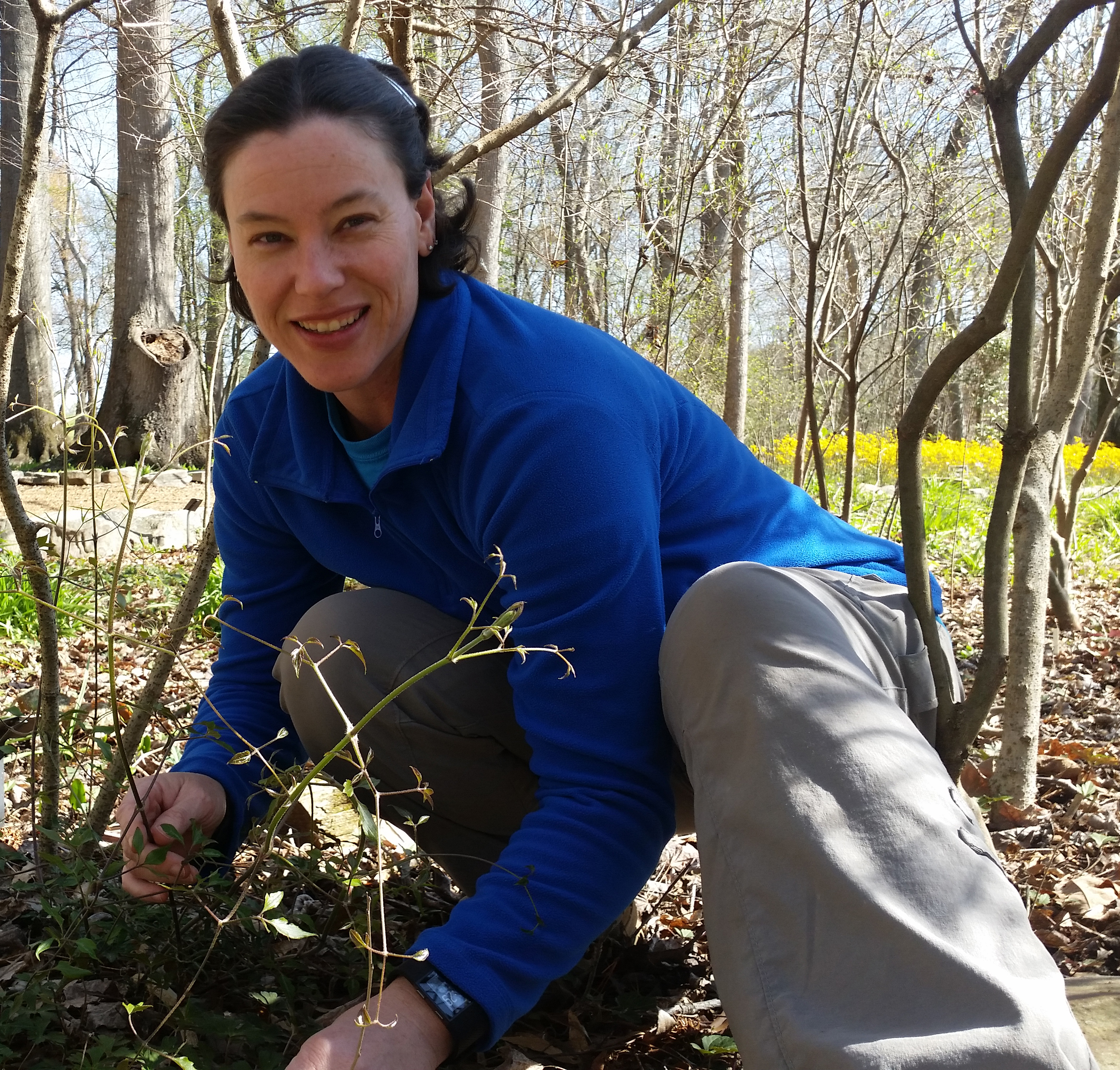If you think the best of the garden’s bounty is past, think again! October is a great time to see lots of color: flowers, pumpkins, and fall color are painting beautiful views at Huntsville Botanical Garden!
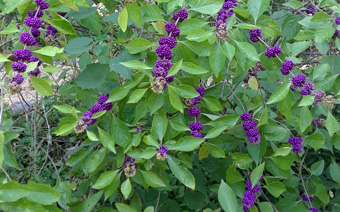 Callicarpa americana, American Beautyberry (located on the Mathews Nature Trail)
Callicarpa americana, American Beautyberry (located on the Mathews Nature Trail)
American beautyberry is a fast growing native perennial shrub, 5-8 feet tall and almost as wide, with graceful drooping branches. Inconspicuous flowers of blue, violet, pink, or white are arranged in clusters on the stems between the leaves in summer, developing into very showy clusters of small purple or white “berries” (drupes) that encircle the woody stems. This plant is distributed throughout the southeastern United States, the Caribbean, and northern Mexico. American beautyberry is found in woods, particularly on moist areas under open pine canopies, thickets, right of ways, and fence rows. Beautyberry is a member of the mint family and needs minimal care once its roots are established. It is disease and pest free and has very nice yellow fall color.
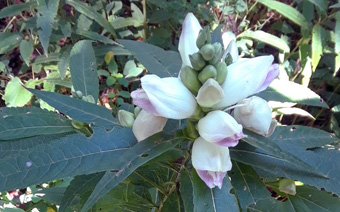 Chelone glabra, White Turtlehead (located on the Mathews Nature Trail)
Chelone glabra, White Turtlehead (located on the Mathews Nature Trail)
Chelone glabra, commonly called turtlehead, is a stiffly erect clump-forming native perennial which typically grows 2-3 feet tall and occurs in moist woods, swampy areas and along streams along the Appalachian and Cumberland Plateaus. The coarsely-toothed, lance-shaped, dark green leaves form a nice backdrop for the hooded, two-lipped, white flowers with a tinge of pink that appear in tight, spike-like terminal racemes from late summer into autumn. The flowers are attractive to butterflies. The genus name comes from the Greek word chelone which means tortoise, referring to the shape of the flowers.
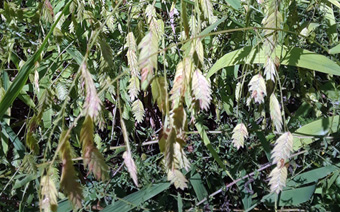 Chasmanthium latifolium, Northern Sea Oats (located in the Four Seasons Garden)
Chasmanthium latifolium, Northern Sea Oats (located in the Four Seasons Garden)
Chasmanthium latifolium, is a clump-forming, upright, ornamental grass, that typically grows 2-4 feet and is endemic to rich woods or rocky slopes along streams. It’s most distinguishing feature is the flat, drooping seed heads which hang in terminal clusters on arching stems. The seed heads emerge green but turn purplish bronze by late summer. Easily grown in average, medium to wet, well-drained soil in full sun to part shade. While tolerant of poor soils, it prefers moist, fertile soils. One of the more shade tolerant of the ornamental grasses. It can self-seed, but it rarely spreads aggressively here. This plant provides excellent contrast and texture almost year-round in a perennial border and is fantastic for dried flower arrangements.
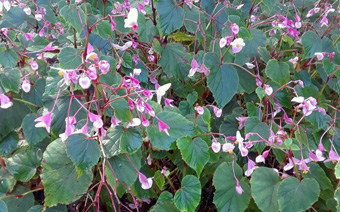 Begonia grandis, Hardy Begonia (located on the Four Seasons Garden and Bush Azalea Trail)
Begonia grandis, Hardy Begonia (located on the Four Seasons Garden and Bush Azalea Trail)
This tuberous begonia is native to southern China, and has attractive green heart-shaped leaves with red veining and red undersides. Pendulous clusters of slightly fragrant, pink or white blossoms are held from midsummer until frost. Begonia grandis prefers organically rich, moist but well-drained soil in moderate or full shade, with shelter from afternoon sun. Despite going dormant in the winter, plants will self-propagate by tiny bulblets which form in the leaf axils in autumn and will slowly colonize a shady garden.
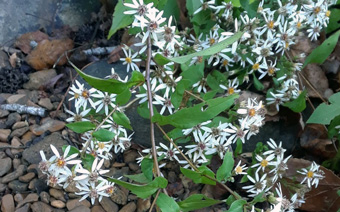 Eurybia divaricata, White Wood Aster (located on Bush Azalea Trail)
Eurybia divaricata, White Wood Aster (located on Bush Azalea Trail)
Eurybia divaricata is native to eastern North America and typically grows in dry open woods. It forms loose clumps with dark, sprawling, sometimes zigzag stems up to 2.5′ tall. The small abundant flowers have white rays and yellow to red centers, appear in late summer to early fall, and are attractive to butterflies. This plant thrives in shade and tolerates dry conditions, and has no known serious insect or disease problems.
 Anemone x hybrid ‘September Charm’, Chinese anemone (located at the Garden of Hope)
Anemone x hybrid ‘September Charm’, Chinese anemone (located at the Garden of Hope)
Commonly called Japanese anemone, Anemone x hybrida is a fibrous-rooted late summer to fall flowering perennial that typically grows to 2-3 feet tall. Although native to scrubs, grassy slopes and streams in central China, it has been naturalized in Japan for hundreds of years and was mistakenly considered to be a Japanese native. Upright graceful branching flower stems rise above the foliage in late summer bearing showy white or pink flowers. It prefers average moisture soils in full sun to part shade. The bloom period often lasts until the first frost and it is resistant to deer browse.
And all of that is before you even consider fall displays of Chrysanthemums, pumpkins, and spectacular fall leaves!

